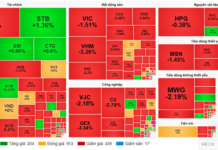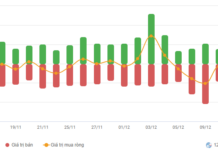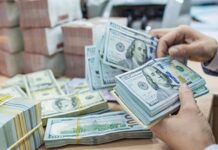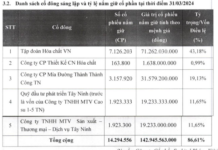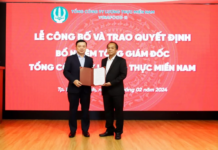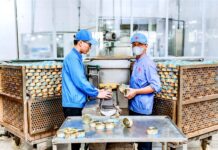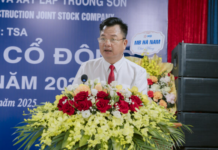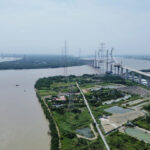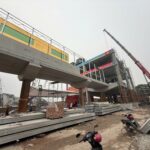
Hanoi Moïi newspaper, citing the Hanoi Capital Master Plan, reports that Hanoi is poised to become a regional and international hub for modern trade and services.
Trade, logistics, finance, urban services, public services, and a vibrant night-time economy are all part of Hanoi’s vision, underpinned by sustainable tourism development and highly competitive technology applications.
The master plan emphasizes enhancing connections between Hanoi’s commercial and service activities and those of other regional and national centers through economic corridors and belts.
It entails developing comprehensive and modern financial, banking, and insurance services, as well as domestic and international commodity trading centers, leveraging high-speed, secure information technology infrastructure, a robust digital ecosystem, multi-modal connectivity, cashless payments, and smart financial services.

One specific direction is to develop a financial and banking center in the Hoan Kiem district area. After 2030, a new complex of financial, banking, commercial, and international services will emerge along the Nhat Tan – Noi Bai axis.
The boundaries of Hoan Kiem district are as follows: to the north, Ba Dinh district up to Hang Dau street; to the east, the Red River with the outer dike area from Phuc Tan – Long Bien market to Van Kiep street; to the south, Hai Ba Trung district marked by Han Thuyen – Le Van Hieu – Nguyen Du streets; and to the west, Ba Dinh and Dong Da districts, separated by Ly Nam De street and the Hanoi railway station area.
Despite its modest size of just 5.29 square kilometers (smaller than West Lake at 5.3 square kilometers), Hoan Kiem is one of the most bustling, developed, and expensive areas in the capital.
It serves as Hanoi’s administrative, economic, and cultural center, hosting significant transportation hubs for rail, water, and road, as well as being the frequent venue for important political and cultural events in the city and the country.

The district is also home to numerous historical sites and intangible and tangible cultural heritage associated with the thousand-year history of Thang Long – Hanoi, attracting domestic and international tourists alike.
In recent years, Hoan Kiem district’s economy has grown sustainably and rapidly, with a shift towards increasing the proportion of services, trade, and tourism (in 2019, this sector accounted for more than 98%).
Annual state budget revenues have consistently exceeded the city’s plans. In 2021, among Hanoi’s districts and counties, Hoan Kiem ranked second in budget revenue with VND 14,008 billion. In 2022, the district’s total budget revenue reached VND 14,732 billion, representing 131% of the estimate and a 5.2% increase from the previous year.
2024: Hoan Kiem District’s Budget Revenue Reaches Nearly VND 22,000 Billion
In 2023, Hoan Kiem district was slated for merger due to insufficient area criteria, but the Hanoi People’s Committee cited reasons against the merger, including Hoan Kiem’s status as the city’s administrative, political, economic, and cultural center.
The district has a stable administrative boundary established before 1945 and a rich historical and cultural tradition… associated with the history of the formation of Dai La, Thang Long, and Dong Do.
The planning around Hoan Kiem Lake is a unique entity with specific characteristics, inheriting history, culture, and architecture, and is divided into three main areas: the Old Quarter, the Ho Guom and its vicinity, and the Old Street, retaining a stable form from 1990 to the present.

In recent years, Hoan Kiem district’s economy has consistently grown rapidly and sustainably, with a predominant structure of trade, tourism, and services.
In 2024, the district achieved 17 out of 18 targets assigned by the District People’s Council, including surpassing 8 targets. State budget collection performed well, with an estimated total revenue of VND 21,845 billion, or 117.1% of the estimate and 133.48% year-on-year; of which, the district’s budget collection was estimated at VND 2,296.21 billion, or 151.2% of the city’s assigned estimate and 110.5% of the district’s assigned estimate.
For 2025, Vu Dang Dinh, Secretary of the District Party Committee and Chairman of the District People’s Council, affirmed that the district will continue to drastically improve the business and investment environment. Synchronous solutions will be implemented to develop trade and services, promote and develop tourism, and encourage the development of craft streets towards higher quality and efficiency. Efforts will be made to exceed the state budget revenue target for 2025.


